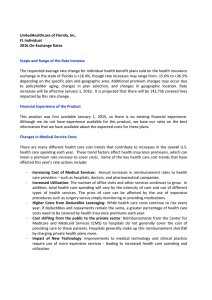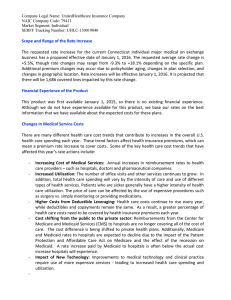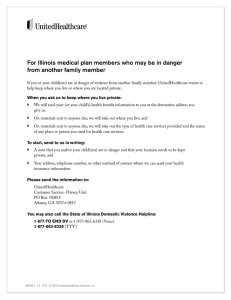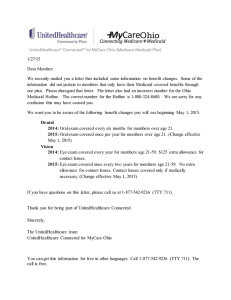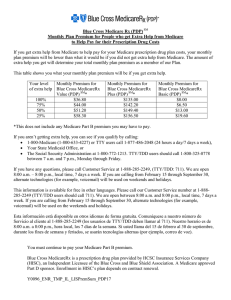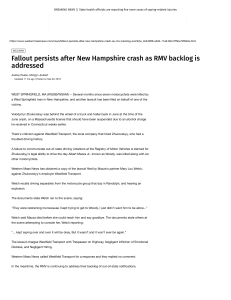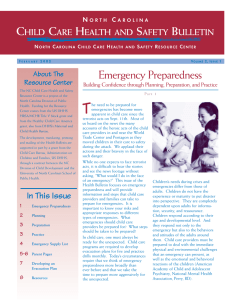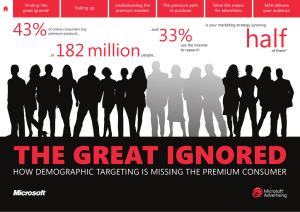Changes in Medical Service Costs
Anuncio
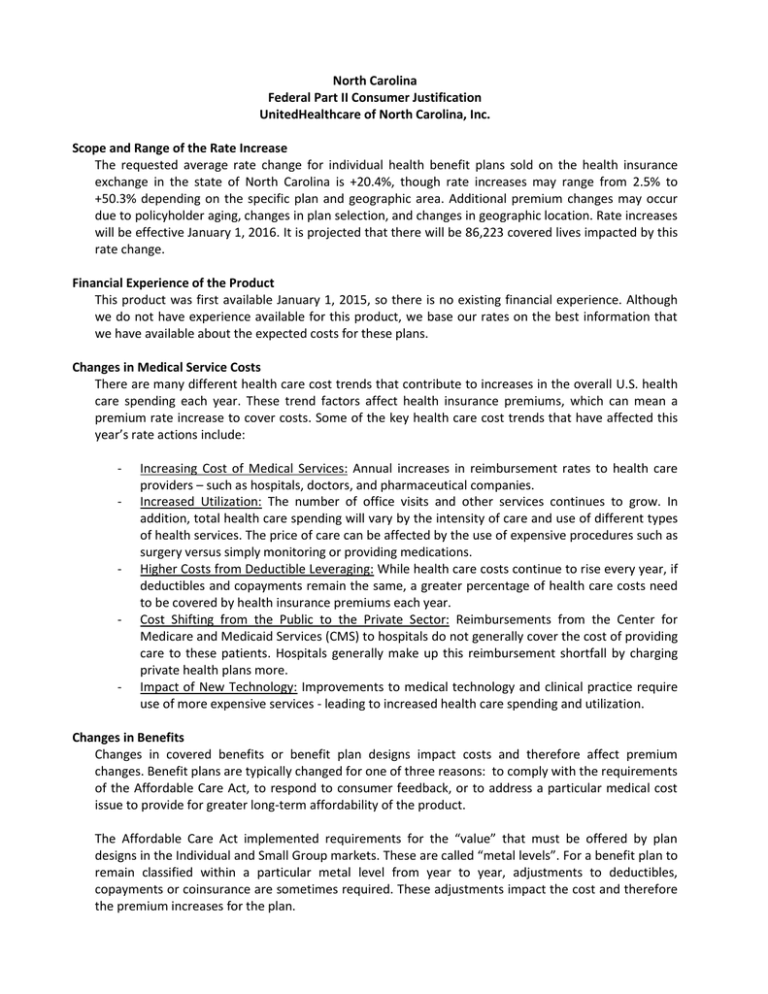
North Carolina Federal Part II Consumer Justification UnitedHealthcare of North Carolina, Inc. Scope and Range of the Rate Increase The requested average rate change for individual health benefit plans sold on the health insurance exchange in the state of North Carolina is +20.4%, though rate increases may range from 2.5% to +50.3% depending on the specific plan and geographic area. Additional premium changes may occur due to policyholder aging, changes in plan selection, and changes in geographic location. Rate increases will be effective January 1, 2016. It is projected that there will be 86,223 covered lives impacted by this rate change. Financial Experience of the Product This product was first available January 1, 2015, so there is no existing financial experience. Although we do not have experience available for this product, we base our rates on the best information that we have available about the expected costs for these plans. Changes in Medical Service Costs There are many different health care cost trends that contribute to increases in the overall U.S. health care spending each year. These trend factors affect health insurance premiums, which can mean a premium rate increase to cover costs. Some of the key health care cost trends that have affected this year’s rate actions include: - - - - Increasing Cost of Medical Services: Annual increases in reimbursement rates to health care providers – such as hospitals, doctors, and pharmaceutical companies. Increased Utilization: The number of office visits and other services continues to grow. In addition, total health care spending will vary by the intensity of care and use of different types of health services. The price of care can be affected by the use of expensive procedures such as surgery versus simply monitoring or providing medications. Higher Costs from Deductible Leveraging: While health care costs continue to rise every year, if deductibles and copayments remain the same, a greater percentage of health care costs need to be covered by health insurance premiums each year. Cost Shifting from the Public to the Private Sector: Reimbursements from the Center for Medicare and Medicaid Services (CMS) to hospitals do not generally cover the cost of providing care to these patients. Hospitals generally make up this reimbursement shortfall by charging private health plans more. Impact of New Technology: Improvements to medical technology and clinical practice require use of more expensive services - leading to increased health care spending and utilization. Changes in Benefits Changes in covered benefits or benefit plan designs impact costs and therefore affect premium changes. Benefit plans are typically changed for one of three reasons: to comply with the requirements of the Affordable Care Act, to respond to consumer feedback, or to address a particular medical cost issue to provide for greater long-term affordability of the product. The Affordable Care Act implemented requirements for the “value” that must be offered by plan designs in the Individual and Small Group markets. These are called “metal levels”. For a benefit plan to remain classified within a particular metal level from year to year, adjustments to deductibles, copayments or coinsurance are sometimes required. These adjustments impact the cost and therefore the premium increases for the plan. Administrative Costs and Anticipated Profits UnitedHealthcare of North Carolina, Inc. works to directly control administrative expenses by adopting better processes and technology and developing programs and innovations that make health care more affordable. We have led the marketplace by introducing key innovations that make health care services more accessible and affordable for customers, improve the quality and coordination of health care services, and help individuals and their physicians make more informed health care decisions. Updated analysis of administrative costs has shown that the administrative costs associated with these plans are higher than previously estimated and those costs are included in the requested rate change. Due to uncertainty in the individual health insurance market as a result of healthcare reform, our margin for profit and contingencies was decreased slightly. State and Federal government imposed taxation and fees are significant factors that impact health care spending and have to be included in the administrative costs associated with the plans. These fees include Patient Protection and Affordable Care Act taxes and fees which impact health insurance costs and need to be reflected in premium. The three largest cost impacts are: - - Insurer Fee: UnitedHealthcare (parent company of UnitedHealthcare of North Carolina, Inc.) estimates that 1.965% of its 2016 premium will be allocated for insurer fees. Reinsurance Fee: A value of $2.25 per member per month has been determined per HHS regulation for 2016 reinsurance fees. For this product in the state of North Carolina, this equates to approximately 0.5% of premium over the 2016 rating period. Exchange Fee: For states like North Carolina that use the Federally Facilitated exchange, HHS has mandated a charge of 3.5% of premium to cover their administrative costs of running the exchange. A review of current UnitedHealthcare of North Carolina, Inc. premium rates indicates that the current rates are not sufficient to cover the expected benefit and administrative costs. The requested rate change is anticipated to be sufficient to cover the projected benefit and administrative costs for the 2016 plan year.
